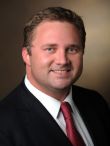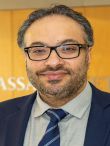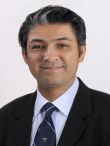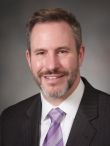Biographical Sketches of the 2020-2021 Candidates
Vice President
J Mocco, MD

Thank you for considering me for SNIS Vice President. I have dedicated my life to the advancement of cerebrovascular disease treatment. Much of my efforts have been focused on performing high quality clinical trials to advance our field. These have included COMPASS, THERAPY, FEAT, COAST, INVEST, and POSITIVE, to name a few. These trials, both completed and ongoing, have made substantial contributions to how we practice our field and, hopefully, lessons will continue to be gleaned from them.
Beyond scientific investigation, I have dedicated my career to building bridges across the factions of our specialty. This is evidenced by my own clinical practice, wherein my partners come from radiology, neurology, and neurosurgery backgrounds. I believe that our patients benefit because of the multi-disciplinary nature of our field. And, it is exactly that multi-disciplinary nature that makes the SNIS such an important organization! I have spent five years serving on the SNIS Board, as both member-at-large and as Governance Committee chair. During this time, I sought to improve collaboration with both the SVIN and the CV Section, the latter of which I previously served as Chair. I have worked extensively with The Joint Commission TAP, the FDA DAISI initiative, the Brain Attack Coalition, and the AHA/ASA to unite stroke proceduralists and bring a unified advocacy effort forward on behalf of our patients.
I believe in the SNIS. It stands the premier multi-specialty society in our field. Its Board has repeatedly demonstrated that they are committed to leading this field into the future and, most importantly, to fighting for our patients’ benefit. It would be a tremendous honor if you would trust me to help the Board steer us towards this future.
G. Lee Pride, MD

Thanks to the Society, nominating committee, and membership for the opportunity to run for the position of SNIS Vice President. I’ve had the privilege of serving the Society for many years in different capacities, including five years on the Board of Directors as Education Chair, Secretary, and Treasurer. Leadership in such a dynamic and collaborative organization carries solemn responsibility to maintain fidelity to our mission of multispecialty collaboration in the promotion of excellence in neurointerventional care. I welcome that responsibility and the opportunity for further service.
My educational and professional background demonstrates my commitment to multispecialty-based education, institutional and societal leadership, and involvement within the SNIS. In preparation for my fellowship training, I completed Neurology and Radiology residencies. Following fellowship, I remained as faculty at a pioneering university program where multispecialty collaboration is the standard; hence, inspiring my recognition that we each have something special to contribute. As the fellowship training director for the Diagnostic Neuroradiology and Neurointerventional programs at the University of Texas Southwestern Medical Center in Dallas, I have extensive experience coordinating and managing trainee education. Nationally, I have service experience on the ASNR Fellowship Director’s Committee, the ASNR Education Committee, and the NESAC committee overseeing CAST accredited fellowships. Through service to SNIS in the role of Vice President, I would bring this experience to the position.
2020 has been a trying year both personally and professionally as all of us have adapted to the reality of managing SARS-CoV-2 spread in our communities. SNIS proactively engaged in related issues of paramount importance to our patients and our members, such as advocating for the continued safety of EMS-driven stroke services in the pandemic and conducting outstanding webinars on COVID-19 related topics. Leveraging technology creatively will remain essential in the next year to maintain our momentum in multispecialty and international collaboration. The Get Ahead of Stroke effort continues to stimulate legislative success surrounding EMS involvement in stroke systems of care. This paradigm of influence will be essential as potential new technologies and neuroprotection strategies modify acute stroke treatment in the future. The success of JNIS and the SNIS foundation will continue to widen under their outstanding leadership teams. Perhaps our most valuable resources are our fellows and young neurointerventionalists. Active engagement through the Young Professionals Committee and other avenues will help stimulate widespread involvement in the Society and focus our attention on training issues. We are an incredibly dynamic society, driven by the seemingly limitless talent and industry of our members. I look forward to further service to SNIS! Thanks again for the nomination and potential opportunity to serve.
Secretary
Ajit S. Puri, MD

I serve as the Chief of the NeuroInterventional Surgery and the Integrated Cerebrovascular program at UMASS Memorial Healthcare with an academic appointment of Associate Professor of Radiology, Neurology and Neurosurgery at University of Massachusetts Medical School. I am also the Co-Director of the New England Center for Stroke Research.
I have served as the Principal Investigator for more than 30 clinical research trials, have authored over 100 publications in multiple peer-reviewed and non peer-reviewed journals and have given over 200 invited presentations on topics in neurointerventional surgery. My research interests include translational research in NIS, developing better techniques for mechanical thrombectomy and improving imaging modalities for neurovascular surgery (optical coherence tomography).
My goals for SNIS focus on continuing to develop the professional and educational resources to make our society the leader in education and policy in neurointerventional surgery worldwide. An additional goal is to support the continued success of JNIS.
Adnan H. Siddiqui, MD, PhD

It would be my honor and privilege to receive your vote to serve as the Secretary of the Society of Neurointerventional Surgery. Here are a few paragraphs summarizing my professional journey. Foremost, I am profoundly indebted to my mentors, Nick Hopkins, Robert Rosenwasser, Charles Hodge and Shirley Joseph in shaping my career as a dual-trained cerebrovascular surgeon and clinician scientist. I am gratified by the role I have played as Professor and Vice-Chair of the Department of Neurosurgery at University at Buffalo where under the leadership of Elad Levy as Chair, we have overseen the prolific academic productivity resulting in our being ranked 7th nationally (JNS) amongst North American academic programs with a personal contribution of over 500 peer-reviewed publications, over 100 chapters, over 63000 citations and an h-index of 67. I am particularly proud of representing Buffalo and the US at most major cerebrovascular conferences around the world with over 200 international presentations to date. I have had the privilege and opportunity to design, conduct and lead multiple major national and international clinical trials and currently serve as National and International PI for multiple major funded multi-site trials.
I lead the Canon Stroke and Vascular Research Center (CSVRC) at University at Buffalo. This multi-disciplinary center with multiple concurrent RO1’s houses neurosurgeons, neuroscientists, physicists and biomedical engineers focused on cutting edge neurovascular biology and pathology, imaging, simulation and hemodynamics. In addition, I serve as the Director of the Neurosurgical Stroke Service at the Gates Vascular Institute in Buffalo, one of the busiest Comprehensive Stroke Services in New York State and the United States. I also serve as the Chief Medical Officer at the Jacobs Institute which is focused on entrepreneurship, testing and training opportunities with medtech strategics and startups in the vascular space.
All these efforts as a microsurgeon, endovascular surgeon, scientist and trialist, have allowed me to gain unique insights into our critical and rapidly evolving specialty. At the same time, these endeavors have required significant collaborations resulting in strong and trusting relationships with fellow neurosurgeons, neurologists, neuroradiologists, scientists, engineers, regulatory officers and industry. I have continually served as an Executive Committee Member of the Cerebrovascular Section for about a decade in multiple roles including Member-at-Large and Treasurer completing my tenure as Chair in 20-21. I currently serve as a Neurosurgeon Member on the Board of the Society of Neurointerventional Surgery (SNIS) Patient Safety Organization which runs the NVQI-QOD Quality Outcomes Registry. Currently, I am completing my term as a Neurosurgery Member-at-Large on the Board of Directors for SNIS. I also serve as reviewer for Journal of Neurointerventional Surgery, Journal of Neurosurgery, Neurosurgery, , Stroke and Lancet amongst many others. I have also served on the Program Committees for the major Cerebrovascular surgery meetings each year including the CV Section and the Society for Neurointerventional Surgery as well as the principal organizer for the Cerebrovascular Complications Conference held in Jackson Hole.
I am most gratified by my pedagogical responsibilities, which allow me to embrace the opportunity to teach medical students, residents and fellows. It is in this regard that my principal focus is to achieve consensus between the various organizations involved in fellowship training and credentialing for Neuroendovascular Surgery. The culmination of discussions with multiple societies over last many years, representing neurologists, neuroradiologists and neurosurgeons have resulted in a unified approach to training standards and accreditation by the Society of Neurological Surgeons under the Committee for Advanced Sub-speciality Training (CAST). I was delighted to serve on the inaugural Neuroendovascular Surgery Advisory Committee alongside neurosurgeons, neurologists and neuroradiologists that facilitates CAST goals. This committee has been adopted for a concerted process leading to individual certification by the American Boards of Neurological Surgery, Radiology and Psychiatry and Neurology. This is a huge responsibility and an extremely important role, which will allow us to profoundly affect the future of our entire specialty.
In light of these successes I was nominated as one of three co-chairs for the Devices for Acute Ischemic Stroke Intervention (DAISI) a Coordinated Registry network run collaboratively by the FDA, CMS, NIH with partnership with physician societies and industry. I believe this is another singular opportunity to unify the multi-specialty neuroendovascular surgery field to develop robust prospective quality outcomes databases to shepherd the next generation of evidence-based practice. I am particularly gratified by the recent part I played in getting the three neurointerventional societies to collectively approach the NINDS to allow neurointerventionalists to play a greater role in NIH sponsored clinical research. The early response has been favorable. My aspiration is to continue this partnership of equals to promote the collective strengthening of clinical practice, individual and institutional accreditation and clinical trials.
Member-at-Large (Interventional Neuroradiology)
Reade A. De Leacy, MD

I am an Australian interventional neuroradiologist and have worked as assistant professor of Neurosurgery and Radiology at the Mount Sinai Hospital in New York since 2015. I am the Co-Director of the Neuroendovascular Fellowship at Mount Sinai, the Director of Neurointerventional Spine Services for the network and the Director of Cerebrovascular Services at Mount Sinai Queens.
I have served as assistant editor at the JNIS since 2016, am a current member of the SNIS Standards and Guidelines Committee and report on the international collaborations committee and neurovascular interventional council for the American Society of Neuroradiology. I am currently serving as one of the SNIS Annual Meeting Chairs.
I believe I can effectively represent my subspecialty within the society with a vision toward collaboration with other interdisciplinary specialty groups and international bodies to further enhance the visibility of neurointerventionalists and the influence of the SNIS.
Ansaar T. Rai, MD

I am currently the chairman of newly formed Department of Neuroradiology at the Rockefeller Neurosciences Institute of West Virginia University in Morgantown. I have been practicing Neurointerventional Surgery for almost the past 18-years and have seen the transformation in our field. I have been with SNIS since its inception and have personally benefitted by being part of this great organization. I have had the good fortune to have served as its secretary, served as an associate editor for its journal, chaired the inaugural fellows’ course and the 10th annual meeting.
SNIS has done a great job in identifying issues relevant to our field and representing our interests to other entities. There is always room for improvement. As director of our neurointerventional program I like our membership have faced issues pertaining to my practice. Whether it is productivity targets, call coverage, nebulous JCAHO requirements or corporate mandates – by harnessing our collective wisdom and presenting a united muscular front our society can continue to ensure high quality patient care while safeguarding the physicians who deliver it.
If elected, I will serve the society and our membership sincerely and to the best of my ability – I will need everyone’s help, support, input and creativity in moving forward. I appreciate your vote.
Member-at-Large (Endovascular Neurosurgery)
Justin F. Fraser, MD

It is an honor to be nominated to serve as Neurosurgery Member-At-Large for the Society of NeuroInterventional Surgery. It has been a privilege to serve as Chair of the SNIS Standards and Guidelines Committee for the last four years. In that time, there have been major shifts in the evaluation and treatment of cerebrovascular disorders. The members of the SNIS Standards and Guidelines Committee have met that challenge, and provided continuous guidance on the best available evidence in our field. It has been a pleasure working with that group, and seeing that our society truly is led from within by a dedicated and motivated membership. As my tenure leading that Committee closes, I look forward to an opportunity to continue to serve the Society.
With a background at the School of Public and International Affairs at Princeton, I discovered early a desire to collaborate on policy aimed at improving healthcare. After graduating medical school and residency/fellowship at Cornell, I took a leadership role as Director of Cerebrovascular Surgery at University of Kentucky. While here at UK, I have served on multiple hospital committees and taken leadership roles for strategic planning, patient safety, philanthropy, and building design. While these have been rewarding from an institutional viewpoint, my work outside the hospital has been the most stimulating. For the last three years, I have Chaired the Kentucky Board of Emergency Medical Services Cardiac and Stroke Subcommittee. A collaborative group of EMS providers, nurses, physicians, and administrators, it has set the policy for in-field triage of stroke, particularly ELVO, for our entire state. Through that process, I gained insight into the importance of multidisciplinary cross-talk and collaboration. Since then, I have sought other similar experiences, serving on the American Heart Association (AHA) Stroke Task Force for the Great Rivers Affiliate, on the AHA Stroke Neurovascular Intervention Science Committee, and as SNIS liaison to the AHA Stroke Scientific Statement Oversight Committee.
Recently, I was honored to be named as one of the AANS/CNS CV Section Liaison to the AHA International Stroke Conference Program Committee. I believe these types of cross-society interactions are a clear reflection of the responsibilities of an SNIS Member-At Large. Beyond my role in Standards and Guidelines, I have also maintained involvement in the organization of the SNIS annual meeting. As a member of the planning committee for the last several years, I have organized and moderated sessions and helped create the content and schedule for the meeting. This year, I am honored to co-direct the SNIS Annual Fellows Course, assembling a curriculum that will interest and educate participants. With these experiences, I would plan to carry forward that leadership to the SNIS Board, building bridges across our specialty with other societies throughout the world while advancing the mission to educate the rising experts in our field.
Babu G. Welch, MD

I was very happy to hear about my nomination for a Member-at-Large (Endovascular Neurosurgery) position within the Society of Neurointerventional Surgery (SNIS). As a Senior member of SNIS, I am excited about the possibility of increasing my role in SNIS.
To date my contributions to SNIS include:
- Annual meeting abstract review for multiple years
- Ad hoc reviewer for JNIS
- Faculty for the Fellows Course for multiple years
- Faculty for Conference presentations for multiple years
- Represented SNIS as Invited Faculty for international meetings
- Facilitated the first official SNIS/CV Section Combined Annual meeting (Aug 2020)
- As the current Chair of the AANS/CNS Cerebrovascular section, I have interacted very closely with members of the Executive Board to make sure that SNIS members had access to CV Section Foundation funding
- I involved SNIS leadership in a unified response by the major cerebrovascular societies on the topic of healthcare disparities.
I am most interested in this position as it will allow me to be of assistance to the Executive Board not just as a member but an official representative. I look forward to working on behalf of SNIS in the national and international community to improve the delivery of cerebrovascular care.
Member-at-Large (Interventional Neurology)
Michael T. Froehler, MD, PhD

I am honored to be nominated to serve as the interventional neurology Member-at-Large on the SNIS board of directors. I’m currently the director of the Cerebrovascular Program, director of the CAST-approved Neuro Endovascular Surgery Fellowship, and Associate Professor of Neurology, Neurosurgery, and Radiology at Vanderbilt University Medical Center.
If elected, I will focus my efforts on further cultivating the harmony across the multiple specialties that comprise the membership of SNIS. I have partnered with many neuroradiologists and neurosurgeons throughout my career in neuro intervention, and am very proud of our current, highly-collaborative Vanderbilt Cerebrovascular team that consists of myself and two endovascular neurosurgeons.
I will also advocate for the continued development of individual certification in our field. CAST has provided an important step toward board-certification in neuro endovascular surgery, and I support further multi-disciplinary progress toward certification for all practitioners of neuro interventional surgery.
Finally, I hope to strengthen our society’s relationship with the FDA. I previously served as a medical review officer with FDA, and continue to engage in multiple regulatory projects. Our field will certainly benefit from additional clinical input to the FDA.
Violiza Inoa, MD

Violiza Inoa is a neurologist who specializes in vascular neurology and neurointervention. She is currently an integral part of the neuroendovascular team at Semmes Murphey Clinic in Memphis, TN and holds a position as Assistant Professor for both the Neurology and Neurosurgical Departments at the University of Tennessee.
Since 2014, Violiza has been an active member of the Society of NeuroInterventional Surgery (SNIS), engaging in various activities such as advocacy in support of stroke services in front of congress-people in the State of Tennessee; serving as Chair of the 2019 Fellows Course at the Joint Cerebrovascular Section and the 16th SNIS annual meetings; assisting with the development of the Spanish version of the SNIS Patient Information Brochures; and through diverse academic activities including participation as panelist in the SNIS Insights Online Webinar Series during the ongoing COVID-19 pandemic.
“I am honored to be considered for a leadership position on the SNIS Board. I share this society’s mission in support of excellence in clinical practices and academic and research advancements, while fostering common ground for the various fields within Neurointervention. My goal is to build upon the continued efforts from the SNIS Board to encourage a network that acknowledges the outstanding work of its society members and celebrates diversity.”


